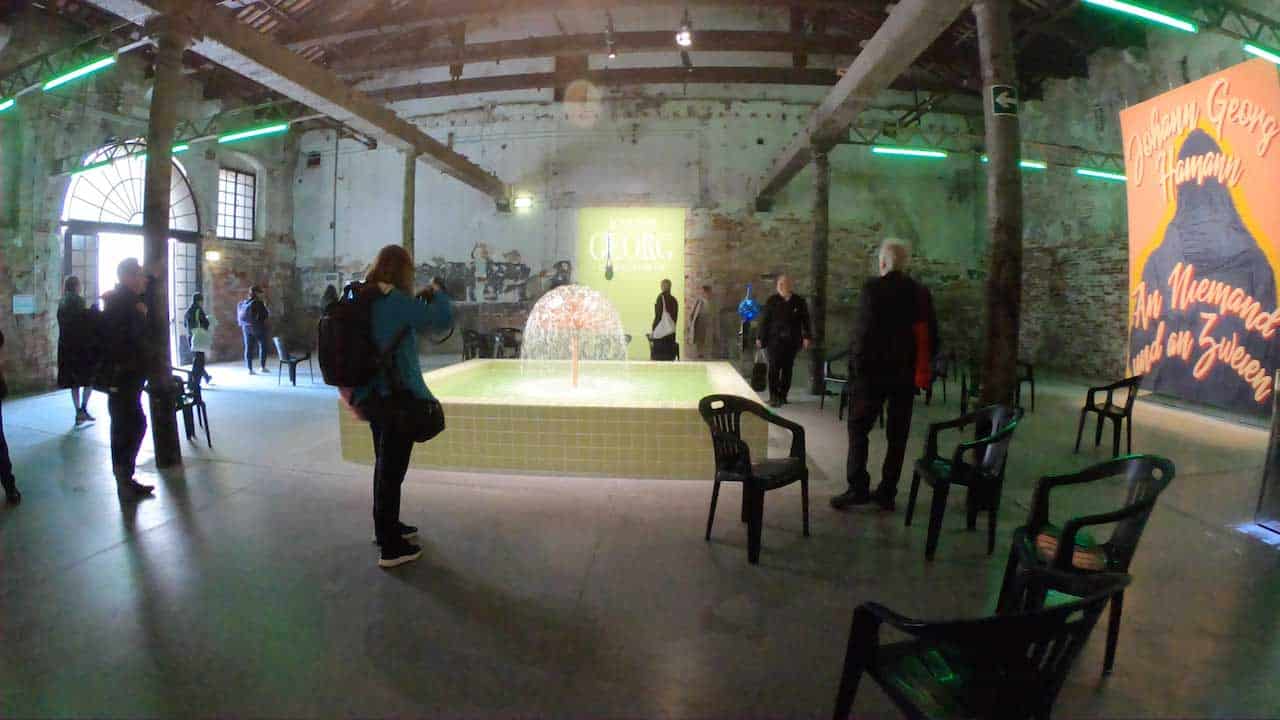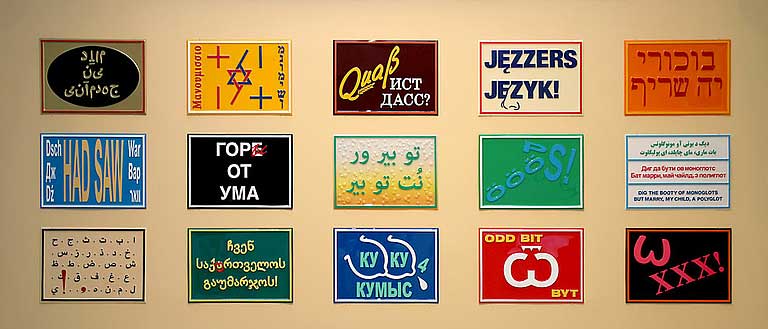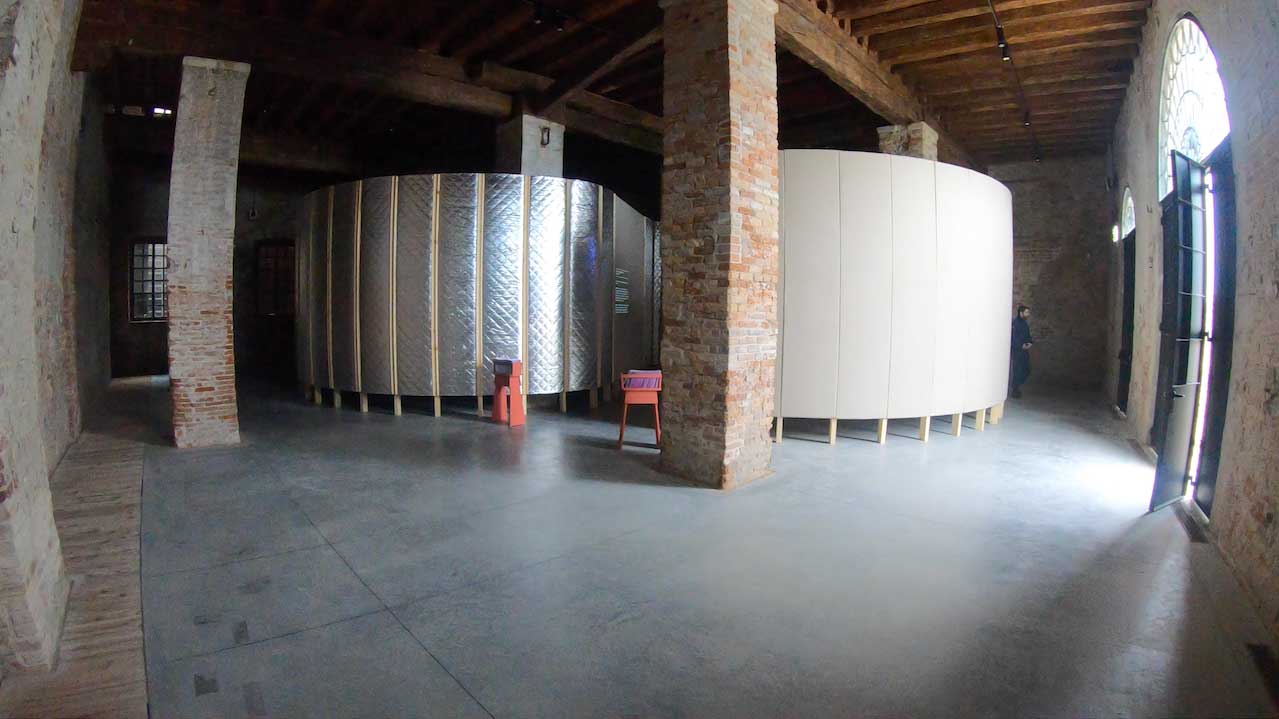Venice Biennale has been active since 1895 and Polish representation there reaches back to 1932. This is when the interwar government decided to purchase its pavilion in Giardini. Traditionally, pavilions located in this area are the most prestigious and are high up the unwritten biennial hierarchy. The majority are owned by postcolonial powers and countries with the highest GDP. The park now hosts 29 national pavilions and Poland has been lucky to get a prominent place in a bigger complex of pavilions dating from 1938, designed by Brenno Del Giudice. The Polish pavilion flanks, together with Romania on one side and Serbia and Egypt on the other, the central pavilion of Venice. Similar to other pavilions it is the property of its country and is managed by the ministry of culture. This year Poland is represented by Roman Stanczak, but the Polish Pavilion is one of many places where one can find Polish presence. Poles are also showing in Arsenale and in numerous exhibitions spread across the city happening during the Biennale.
Roman Stanczak, Polish Pavilion, Giardini
The space of this year’s Polish Pavilion resembles an aeroplane hangar with Roman Stanczak’s plane literally turned inside out, sitting in the middle. Stanczak is a slightly surprising choice for the pavilion, as he is not very well-known. He studied at the famous studio of prof. Grzegorz Kowalski at the Warsaw Academy of Fine Arts in the 1990s but after a couple of exhibitions at important institutions, Stanczak disappeared from the art scene. It may be an unexpected choice but a good one. Artsy and designboom included the Polish Pavilion in their lists of the best pavilions to see in Venice this year and I share their opinion. Stanczak’s proposition is perfect for the fast-paced nature of a festival like the Venice Biennale. People usually go in and out of exhibitions quickly, not having enough time or energy to spend lots of time watching long videos or even looking at multiple artworks. Stanczak’s large sculpture with an intelligent concept seems perfect. One walks in, has a quick look and gets it straight away. It is quite startling that the cockpit, chairs and other usually seen inside elements are outside of the vehicle and wings are rolled inside. The meaning of the sculpture can be spiritual, read as a metaphor for the preparation for death, passage to the other side and creation through destruction. It is also a commentary on contemporary economic and political transformations.

Roman Stanczak, Flight, 2019, Installation
Central Exhibition in Arsenale and Giardini
The Central Exhibition of this year’s biennial curated by Londoner Ralph Rugoff has a considerably limited geographical choice of artists. The majority of artists are based in New York, Berlin, Los Angeles, Paris and London. Maybe this is why the only Polish artists included in the show are from the Polish diaspora: Berlin-based Maria Loboda and Slavs and Tatars – anonymous international art collective founded by a Polish-Iranian duo “based in Eurasia”. Rugoff divided the exhibition into two separate ones held simultaneously at the Arsenale and the Central Pavilion. Artists exhibit completely different types of work for each of the exhibitions. The experiment aimed to demonstrate a variety of artistic practices and that artists work in different ways. Loboda’s work in Arsenale Lord of Abandoned Success (L’Argile Humide) consists of unfinished wet clay pieces on sculptors’ stands, partially wrapped in plastic film and clothes. It is a complete artwork combined of incomplete sculptures. It addresses the impossibility of achieving completion in art making. In the Central Pavilion Loboda presents a series of photographs from Zero Dynasty series, showing ancient objects being restored, giving the sensation of an intrusion into the image, suggesting omnipresence of the human kind and our role in the constitution of culture, the building of our own history.

Maria Loboda, Lord of Abandoned Success (L’Argile Humide), 2017
Clay, clothes, plastic, wooden stands, Photo credit Universes.ar

Maria Loboda, Zero Dynasty III, 2017, C-print, 120 × 84 cm
Slavs and Tatars presented a not to be missed sculptural installation Dillio Plaza in Arsenale. The installation offers visitors (un)rest and an opportunity to revive themselves with a pickle-juice drink while looking at a calming sauerkraut juice fountain pouring down to a tiled pool, similar to those found in spa towns. There is also a vending machine with sauerkraut juice; unfortunately, when I was visiting the biennial it was out of stock. Since then it has been stocked up and visitors can actually buy a bottle of this beverage called “Brine and Punishment”. Dillio Plaza reclaims the Turkic origins of fermentation, first used to preserve nutrition amongst nomadic tribes, those very foreign and ‘barbarian’ cultures against which Western Civilization has historically defined itself. Dillio Plaza brings the presence of bacteria and microbes to challenge our understanding of self, other and foreign. In Giardini Slavs and Tatars presented wall based pieces from their signature series Tranny Tease, exploring the pitfalls of transliteration.

Slavs and Tatars, Dillio Plaza, 2019, Installation

Slavs and Tatars, Tranny Tease (pour Marcel), 2009-16, Vacuum-formed plastic, acrylic paint, 91 x 64 cm each
Applied Arts Pavilion. Special Project by Marysia Lewandowska, Arsenale
Another artist from the Polish diaspora is London-based Marysia Lewandowska whom Rugoff commissioned to make new work for the Pavilion of Applied Arts in Arsenale. It is quite shocking that this year’s Biennale will be the first ever in which 50% of artists are female. Lewandowska took women inclusion one step further. She took under close scrutiny the Biennale’s archives and analysed the presence of women in shaping the exhibition. She noticed that people who were involved in planning the first biennial in 1985 were all men. This means that either women present in the public life back then did not participate in shaping the Biennale or we simply have no record of it. In response, the artist made a video of women in a discussion about the Biennale that could have taken place in 1983. Lewandowska created an augmented reality which brought women as a voice in the history of this important institution.

Marysia Lewandowska, It’s About Time, 2019, Installation
Alex Baczyński-Jenkins. Performance Art Program of the 58th Venice Biennale
Rugoff’s and Delfina Foundation’s unusual for the Biennale Performance Art Program includes work by Alex Baczyński-Jenkins. Born in London and working between London and Warsaw, Baczyński-Jenkins is the rising star of performance, but he works beyond the divisions of performative and visual arts which is in line with the theme of this year’s Central Exhibition. It seeks to highlight art that exists in between accepted categories and genres, and questions the rationales behind such categorical thinking. I wrote about Baczyński-Jenkins for my Polish presence at Frieze London 2018 article. He then won the prestigious Frieze Artist Award 2018 and in Venice, the artist presents another incarnation of the same work. After entering a black cube hidden in the alleyway on the left immediately after the Arsenale’s ticket barrier one becomes instantly mesmerised by the energetic dance and electronic music. The performed dance draws on the box step, a basic movement used in several social dances, and used to create a choreography that explores collectivity, subjectivity, queer embodiment and desire. The project runs during the preview week in May and the closing weekend in November.

Alex Baczynski-Jenkins, Untitled (Holding Horizon), 2018, Durational work, 3hrs
Exhibitions and projects with Polish artists, happening at the same time as the Biennale:
Featuring: Karolina Łebek, Sabina Sallis, Zorka Wollny
The Palace of Ritual was a programme of immersive, intimate performances, screenings and discursive workshops that aimed to ‘activate heterodox knowledges and practices of healing, sourced from myths, ritual and cosmology’. The project run during the preview week in May.
2. FORCE FIELD. Emerging Polish Artists
Featuring: Norbert Delman, Małgorzata Goliszewska, Bartek Górny, Laura Grudniewska, Marta Hryniuk, Kornel Janczy, Tomasz Koszewnik, Dorota Kozieradzka, Magdalena Łazarczyk, Karolina Mełnicka, Maciej Nowacki, Cyryl Polaczek, Stach Szumski
Presented between 8 May and 15 September FORCE FIELD includes newly commissioned works of thirteen emerging artists selected from SOON project (2013-2018) – the main initiative of the Starak Family Foundation.
3. Józef Robakowski. What Can Still Happen
Robakowski analyses the everyday again, this time through the lens of social media: parades, marches and demonstrations of various political groups, artistic actions, awareness campaigns about various aspects of life. The show presents artist-edited videos of what is happening in the streets and public spaces these days, what is recorded, shared and distributed. The exhibition was on view until 5 June 2019.
4. Roman Opalka: Dire il tempo (Telling time)
Milan and Venice pay tribute to Roman Opałka with an exhibition in two chapters. The exhibition explores Opałka’s oeuvre, presenting a selection of works that mark fundamental milestones in his artistic career. From 4 May until 20 July, the first chapter of this project is available to visitors in the Milan venue BUILDING. From 7 May until 24 November, the second chapter unfolds in the Museum of the Querini Stampalia Foundation, where the works of Roman Opałka forge a dialogue with those of Mariateresa Sartori, and pieces from the institution’s historical collections.
Edited by Lisa Barham











